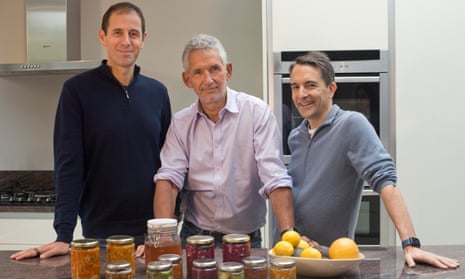Articles
Paleo is all about ditching processed foods that contain refined sugar, salt and vegetable oils (corn, safflower, canola) because our ancestors didn’t eat them. The plan also stresses grass fed meats to get more healthy poly- and monounsaturated fats, and seafood for omega-3 fatty acids.

Getting older doesn’t mean becoming frail, but it does increase the risk of frailty, a condition characterized by declines in muscle strength, energy and speed.
Social isolation, multiple medications and physical inactivity contribute to frailty. So does eating a poor diet.
Many studies, for example, have associated a healthy dietary pattern with a lower risk of frailty.
Now, research published this month in the American Journal of Clinical Nutrition adds to mounting evidence that diet can help guard against frailty.
According to the findings, adding more apples, blueberries, broccoli and onions to your regular diet – foods high in flavonols – is key. And one flavonol in particular, quercetin, appears especially protective.
What is frailty?
Doctors use a screening tool called the Fried Frailty Tool to identify frailty. People are considered frail if they have at least three of five of the following characteristics: unintentional weight loss in the past year (at least five per cent of body weight), muscle loss and weakness, exhaustion, low walking speed and low levels of physical activity.
People with frailty have a greater vulnerability to larger declines in health from minor stressors like the flu or a fall compared to what is expected based on their age alone.
According to Statistics Canada, about 25 per cent of people over 65 and half over 80 live with frailty, while another 32 per cent are considered pre-frail. People with pre-frailty have one or two of the characteristics of frailty.
Flavonoids, flavonols and quercetin
Flavonols belong to one of the six major subclasses of flavonoids, a large family of over 5,000 plant compounds found in vegetables, fruit, tea, cocoa, herbs, red wine, soybeans and pulses.
The flavonol group includes four compounds, one of which is quercetin. You’ll find quercetin in many plant foods including apples, asparagus, broccoli, kale, spinach, onions, dill, parsley, fennel, blueberries, cherries and cranberries.
The flavonol-frailty link
The recent study included 1,701 middle-aged and older adults who took part in the Framingham Heart Study, a long-term multi-generational study.
Participants, with an average age of 58, were followed for 12 years. They did not have frailty at the study’s onset.
Dietary information was collected at the outset to calculate participants’ intake of total flavonoids, flavonoid subclasses and specific types of flavonoids (such as quercetin).
Over the 12 years, 224 individuals developed frailty. While a higher intake of total flavonoids wasn’t associated with frailty risk, a higher intake flavonols was found to be protective.
Each 10 mg per day of higher flavonol intake was tied to a 20-per-cent lower risk of frailty onset during the study.
This association appeared to be driven by quercetin. Each 10 mg per day of higher quercetin intake was associated with a 35-per-cent lower odds of developing frailty.
The findings did not change after the researchers accounted for other possible risk factors such as age, smoking, calorie intake, depressive symptom severity, diabetes and cardiovascular disease.
You’ll find 10 mg of quercetin in seven cherries, one-half cup of blueberries, three-quarters of a cup of chopped broccoli, 1.25 cups of raw spinach, 1.5 medium-sized apples (250 g) and 3.5 cups of raw kale. Other good sources include arugula, red onions, green onions and watercress.
This study was observational and, therefore, doesn’t prove that flavonol- or quercetin-rich foods prevent frailty. It’s possible that other nutritional factors in these foods, or a healthy diet, influenced these findings.
How flavonols support healthy aging
Inflammation has been implicated as a key contributor to developing frailty.
Oxidative stress, an imbalance between harmful free radicals and antioxidants in the body, accumulates during aging and increases inflammation. Over time, elevated levels of inflammation can lead to loss of muscle tissue and muscle strength.
Owing to their strong antioxidant and anti-inflammatory properties, consuming a flavonol-rich diet can lower oxidative stress and may help prevent frailty.
Past studies have associated both Mediterranean-style and anti-inflammatory diets, both plentiful in flavonoids and other antioxidants, with frailty prevention.
Other diet strategies to stay strong with age
In addition to eating an overall healthy diet, older adults should prioritize protein at every meal.
An optimal protein intake is especially important to help prevent loss of muscle mass and strength that can lead to frailty. (Of course, resistance training is crucial too.)
An adequate intake of calcium and vitamin D is needed to help maintain strong bones. Vitamin D can also help preserve muscle strength and mobility as well as prevent falls and frailty.
Some research has also linked higher intakes of carotenoids, important antioxidants, to a reduced risk of frailty. Carotenoids include beta-carotene (carrots, sweet potato, mango, spinach), lutein and zeaxanthin (spinach, kale, Swiss chard), lycopene (tomato sauce, tomato juice, watermelon) and beta-cryptoxanthin (pumpkin, papaya, red bell pepper).
Leslie Beck, a Toronto-based private practice dietitian, is director of food and nutrition at Medcan. Follow her on Twitter @LeslieBeckRD
Source: theglobeandmail.com






















Add comment